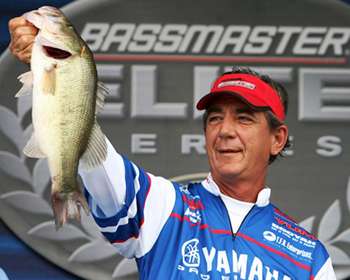
Elite Series veteran Zell Rowland is considered by many to be a topwater master. If bass are going to fall for a topwater bite, Rowland's time-tested knack for deciphering the most effective way to accomplish this is unquestioned.
When it comes to buzzbaits, Rowland has more than enough experience to know that, although these squeaky, gurgling topwater offerings may all look similar, subtle differences can put more bass in the boat. Success with these wire-framed baits ultimately comes down to being able to discern what the bass are wanting.
"When it comes to blade size or noise, it's usually going to depend on what the fish prefer," he says. "When I know the fish are shallow, or if the water is extremely clear, I'll throw a bait that has a painted blade."
On the other hand, if he's fishing over deeper structure or in slightly stained water, Rowland opts for a buzzbait with an unpainted blade. "The more stained the water becomes, the more flash you want the blade to make," he points out. "For that reason, silver or gold blades are my choice in stained water."
In muddy water, Rowland will even go as far as to use a buzzbait featuring a bright chartreuse blade. "It's all going to depend on how the fish react, and you need to be paying close attention to that when you're trying to get things dialed in," he explains.
Bait control, or retrieval speed, as it is more commonly described, is one of the critical elements Rowland tries to refine.
"Again, it really all depends on how the fish want the bait presented," Rowland explains. "I'll usually try and start with a slower retrieve because it's easier to speed up the retrieve than to slow it down. I'll usually bend the blades to cup them a little more. The more you cup it, the slower you can reel it."
Cupping the bait's blades also gives the bait a different sound as it is pulled across the surface. "If my buzzbait isn't producing, I'll change the sound it makes by cupping the blade with my fingers. You can create a lot of water disturbance without having to move the bait very fast at all," says Rowland.
The Texas pro reveals that the buzzbait is a great search tool, and it's at its best when fished along a line of brush, rocks or weeds. "The buzzbait was designed to parallel standing cover or to be fished over the top of submerged cover," he says. "There are some types of vegetation that you can work a buzzbait through, but, generally speaking, it's not meant to be pitched into dense cover."
Retrieval speed, blade color and the overall mood of the fish are each incredibly important aspects to success or failure with a buzzbait, but Rowland points out that there is one attribute that makes the most difference for him. "The one thing that I've seen make the most difference is the clacking sound," he explains.
"Recently, many manufacturers have started adding clackers at the factory, but before that I was adding a small Colorado blade in front of the blade to produce a metal-on-metal sound."




